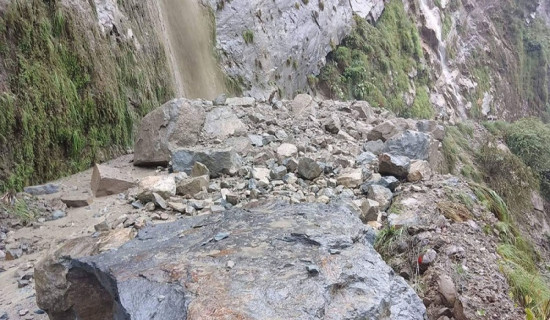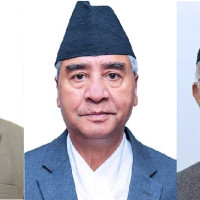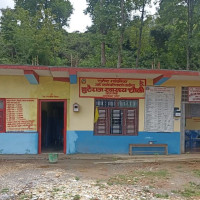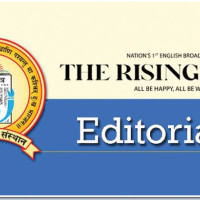- Thursday, 19 June 2025
Eroding Liberal Democratic Order
Elections have been held in democratic countries such as Poland, South Korea, Canada and Mexico recently. Of all the polls stated above, the Polish election has been widely discussed and commented, as Karol Nawrocki, an ally of Poland’s populist former governing party, called Law and Justice, defeated the liberal mayor of Warsaw, Rafal Trzaskowski, in the runoff held the other day after a polarized campaign. Elections in Poland were torn between two poles, namely the Washington and Brussels-backed politics of power.
Washington is represented by President Trump, and Brussels by European countries that claim to champion the liberal global order, contrary to what is described as the Trumpian vision. Trzaskowski had been supported by the country’s centrist and Brussels-inclined prime minister, Donald Tusk, and Nawrocki by the rightist forces, including the Trump administration in the US. Political analysts comment that Poland tilted towards a Trump-led vision when a nationalist historian, Karol Nawrocki, clinched a narrow win in the presidential polls.
Competitive authoritarianism
This is also said to be the latest political swing to competitive authoritarian politics when the leaders win a democratic election through competition but follow illiberal policies through a recourse to soft authoritarian measures. Competitive authoritarianism denotes a type of regime in which meaningful democratic institutions coexist with serious abuse of institutions by the incumbent leaders or a coterie of authority wielders. In several multiparty democracies where strong leaders wield power, they make a domineering push to move into competitive authoritarianism. There are some examples where competitive authoritarian democracies harden into full-blown authoritarianism, while others glide back and forth between democracy and authoritarianism.
Political analysts used to dub India’s democracy as competitive authoritarianism when late Indira Gandhi was ruling India, especially during the emergency rule. India was also described as a competitive authoritarian democracy when incumbent Prime Minister Narendra Modi was ruling the country during his previous tenure with a single-party majority in the parliament. In this context, the incumbent US President Trump is described as an authoritarian leader in the US media who not only failed to uphold the abiding norms of liberal order but also issued executive decrees indiscriminately, some of which were revoked by the courts.
Political analysts have warned that getting multiparty democracy introduced in a particular country may be easier, but making it last, functioning and resilient by upholding democratic values and norms is challenging. When the authoritarian regimes had collapsed worldwide, one after the other, during the decade of the nineties, it was appreciated that a new wave had swept in favour of democracy. The so-called wave of democracy sweeping across the world around the nineties was celebrated when the communist regimes in the Soviet Union and Eastern Europe, among others, tumbled one after the other. It had been termed as the biggest triumph of liberal values over the totalitarian and authoritarian order. And it seemed then that there would be no dictatorial regimes left to rule their citizens in the immediate future.
The reason behind the fall of authoritarian regimes and the transition to democracy in the 1990s, as mentioned by late Samuel Huntington, is, among others, the growing legitimacy problems and their failure to perform according to the expectations and aspirations of the people. Robert A Dahl, a reputed American political scientist, remarks in his work titled On Democracy that “with visible failures of the totalitarian systems, military dictatorships and many other authoritarian regimes, anti-democratic ideas, beliefs and ideologies lost their previous appeal throughout much of the world. Never before in human history had so many people supported democratic ideas and institutions”.
However, this has proved to be a false prophecy. Democracy can be reversed and rolled back, or its basic tenets and practices can be overruled. In many countries, including Nepal, democracy has either failed to deliver or been institutionalized in robust terms. This has primarily happened due to systemic failures of democratic regimes to operate and deliver effectively in addressing the needs and aspirations of the people. The growing inability to provide welfare, prosperity, equity, justice, domestic order or external security has disappointed the citizens, and as a result, citizens have felt alienated from the process of democratic governance.
Compelling need
The widening and deepening of democracy has been a compelling need to ensure that it not only delivers but is also practiced as a way of life for the people. This calls for moving beyond the planks of the formal democratic institutions and procedures like periodic elections every five years, but also reaching out to the people and enabling them to participate continuously as the shapers and makers of democratic goods and services. Therefore, the democratic institution should be infused with the politics of participatory democracy.
The democratic political practices require not only political contestations, but also that the contestation be peppered with certain basic moral and political principles, including citizen control over government. The democratic institutions need to be held by their democratic promise by enhancing citizen participation so that the exercise of power at all levels of political authority is endorsed by the citizens. The pedagogy of effective democracy education should include a basic understanding and appreciation of how democracy and its institutions work and how these contrast to those of the undemocratic governments, inculcation of public spiritedness and a sense of shared responsibility by all citizens.
(The author is presently associated with Policy Research Institute (PRI) as a senior research fellow. rijalmukti@gmail.com)

















